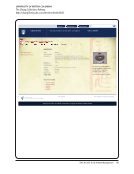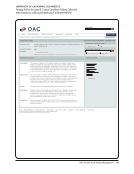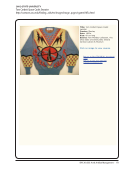SPEC Kit 333: Art &Artifact Management · 39
We are still at an early stage—identifying, creating preliminary inventories, archivally re-housing and developing
numbering and labeling systems as we go. We have not “chosen” a preferred tool, but hope we will be able to use
museums collections management software for the next step as we have tried other methods and they fall short.
We use CONTENTdm to provide item-level access to some of our collections.
We use the same tools for art as we use for artifacts.
26. If you use more than one tool, how do you determine which one to use for an item or collection?
Check all that apply. N=53
Nature of the collection (e.g., objects that are part of a manuscript collection
may be treated differently than objects in an art collection) 39 74%
Staffing/resources available for description 34 64%
Material type (e.g., archaeological objects may be treated differently than merchandise) 33 62%
Size of collection 26 49%
Anticipated use 23 43%
Method of acquisition (e.g., purchase, donation, transfer) 4 8%
Other method 5 9%
Please specify the other method.
All collections receive collection-level MARC records. All finding aids are generated directly from database some
artifacts receive only folder-level description, others item-level.
Historical approaches vary by unit.
Inherent value or uniqueness. Also, condition and preservation costs.
Transitioning to Archivist’s Toolkit. Some tools are no longer used, but still maintained. All collections get EAD and
MARC records.
Value (monetary).
27. Please enter any additional comments about choice of tools. N=7
Art and artifact materials are treated in a similar way. We rely on MARC records for description in order to integrate
information about visual material collections with the Library’s other holdings, although a Prints &Photographs
Online Catalog also combines MARC records in standalone databases with MARC records from the Library’s ILS. For a
We are still at an early stage—identifying, creating preliminary inventories, archivally re-housing and developing
numbering and labeling systems as we go. We have not “chosen” a preferred tool, but hope we will be able to use
museums collections management software for the next step as we have tried other methods and they fall short.
We use CONTENTdm to provide item-level access to some of our collections.
We use the same tools for art as we use for artifacts.
26. If you use more than one tool, how do you determine which one to use for an item or collection?
Check all that apply. N=53
Nature of the collection (e.g., objects that are part of a manuscript collection
may be treated differently than objects in an art collection) 39 74%
Staffing/resources available for description 34 64%
Material type (e.g., archaeological objects may be treated differently than merchandise) 33 62%
Size of collection 26 49%
Anticipated use 23 43%
Method of acquisition (e.g., purchase, donation, transfer) 4 8%
Other method 5 9%
Please specify the other method.
All collections receive collection-level MARC records. All finding aids are generated directly from database some
artifacts receive only folder-level description, others item-level.
Historical approaches vary by unit.
Inherent value or uniqueness. Also, condition and preservation costs.
Transitioning to Archivist’s Toolkit. Some tools are no longer used, but still maintained. All collections get EAD and
MARC records.
Value (monetary).
27. Please enter any additional comments about choice of tools. N=7
Art and artifact materials are treated in a similar way. We rely on MARC records for description in order to integrate
information about visual material collections with the Library’s other holdings, although a Prints &Photographs
Online Catalog also combines MARC records in standalone databases with MARC records from the Library’s ILS. For a


















































































































































































